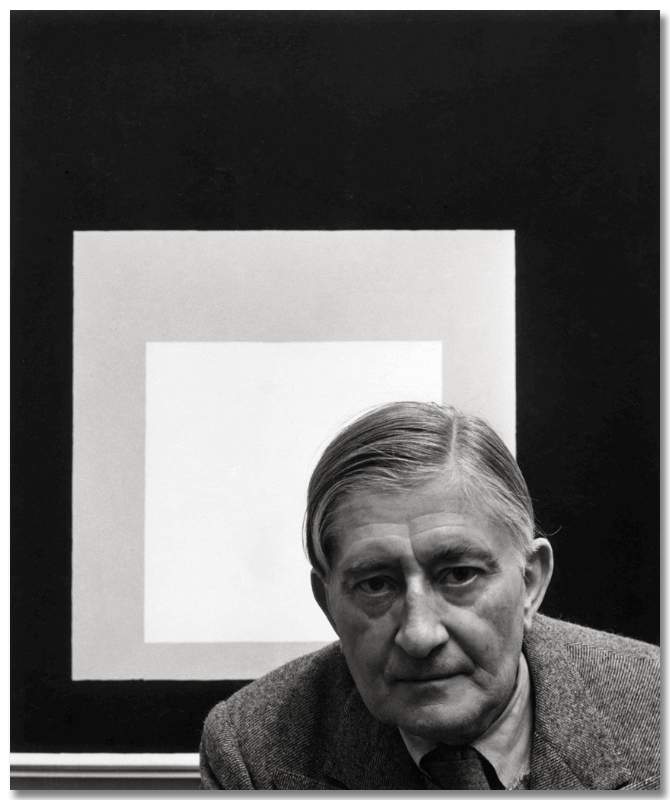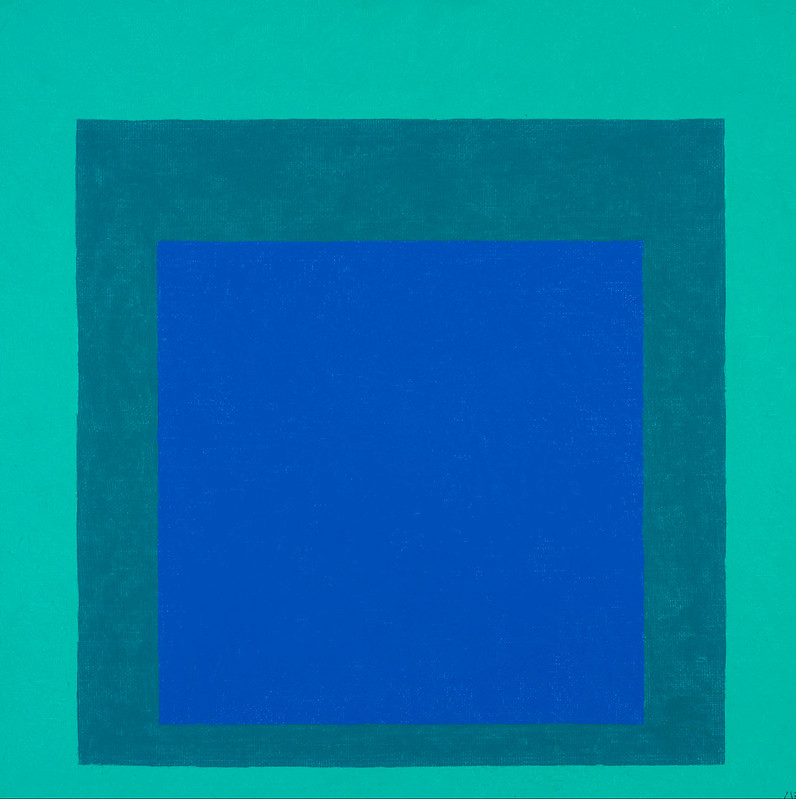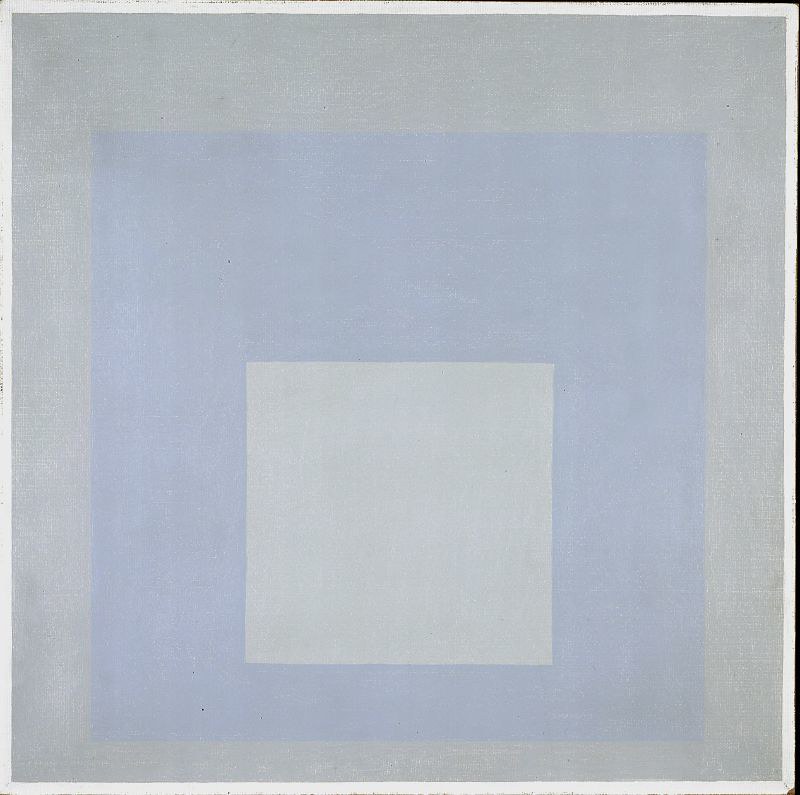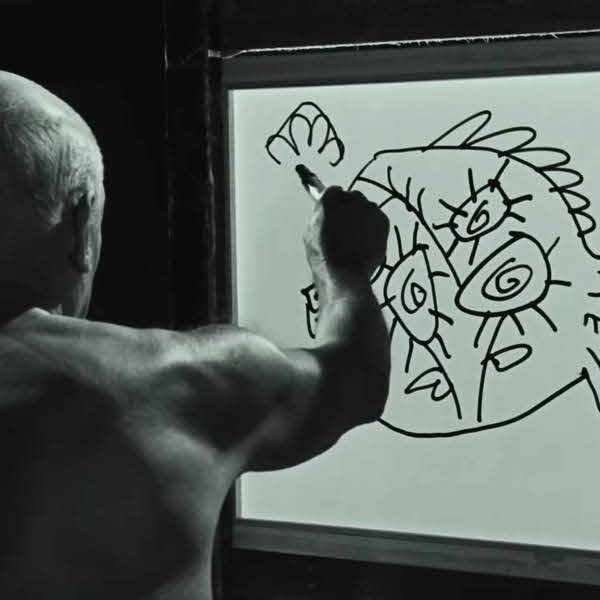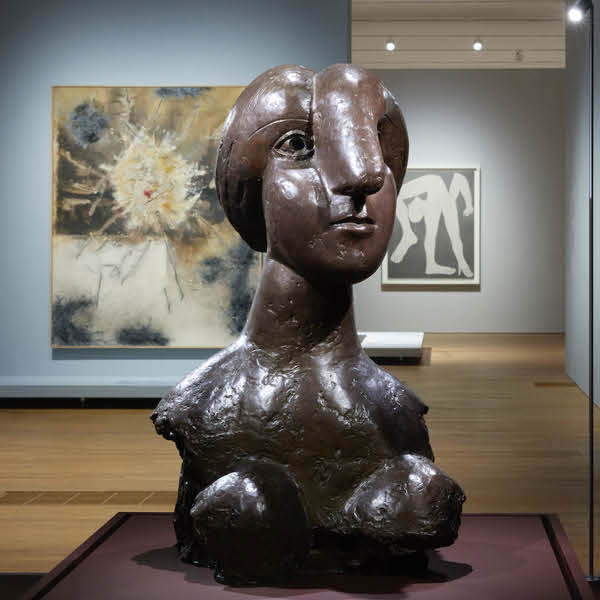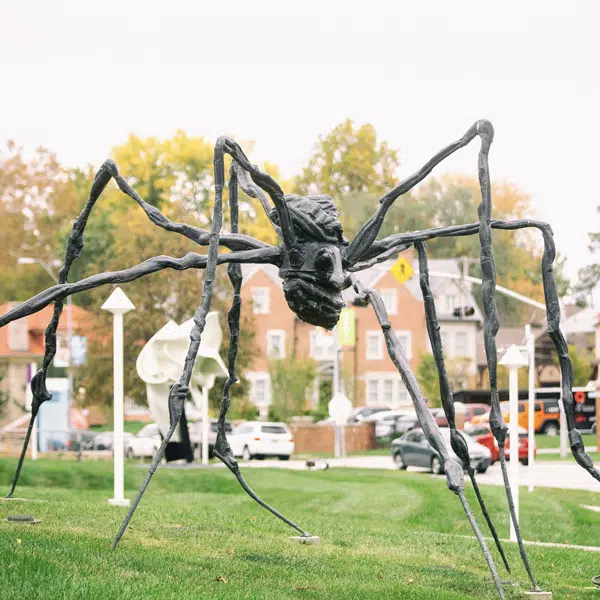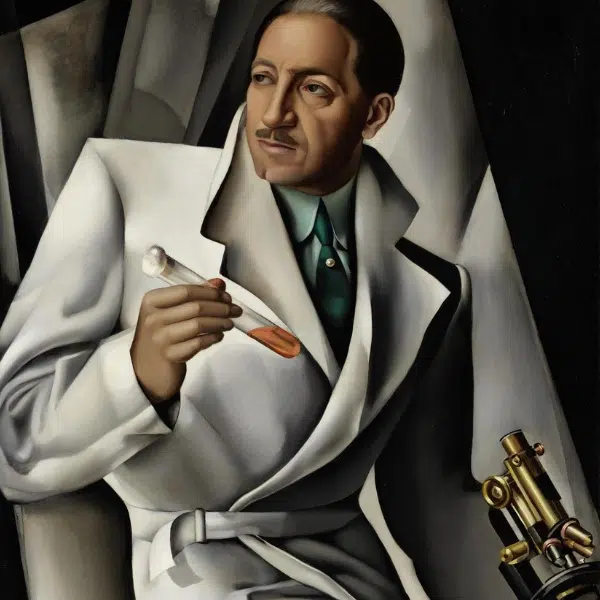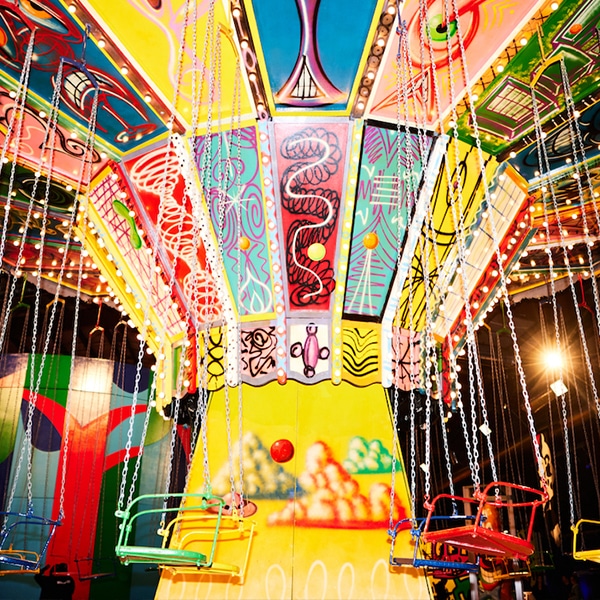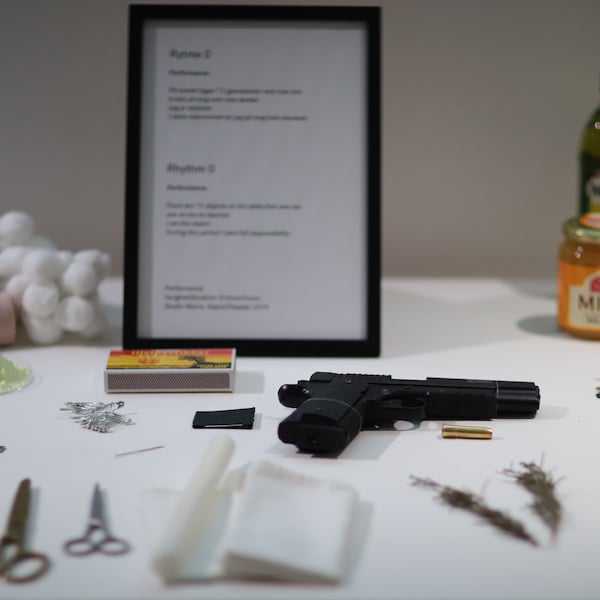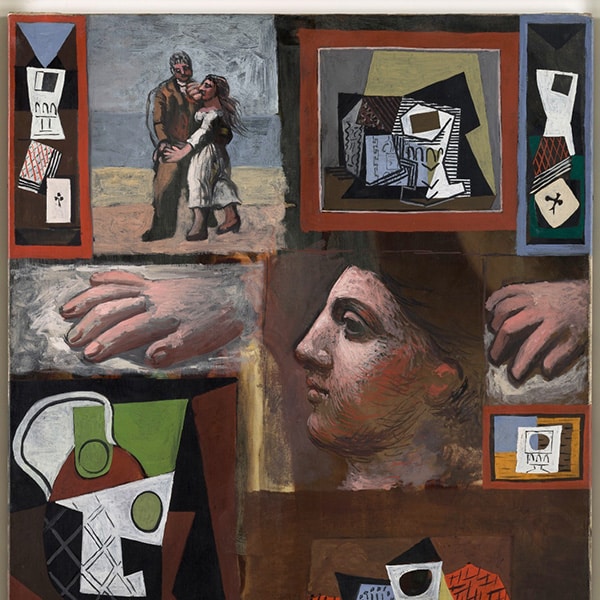Working with color is a challenge. It goes beyond selecting eye-pleasing hues; color is relative and changes depending on what it's placed next to. Having an understanding of its power—and how to achieve the color relationships you want—is vital for any practicing artist. For many creatives, the work of Josef Albers was essential to their understanding of color in a new and fascinating way.
The 20th-century artist and Bauhaus educator created abstract works that explore the relationship between hues via simple forms. He was an accomplished artist and produced many pieces in his studio that are in museums today. Albers was also a college professor whose teachings live on through his 1963 book titled Interaction of Color. The seminal text recorded Albers’ experimental way of studying color and teaching it.
Scroll down for a look at Albers’ life and work and learn more about the Interaction of Color—a book that, 50 years later, is still relevant for artists who work with hues.
Who was Josef Albers?
View this post on Instagram
Full Name | Josef Albers |
Born | March 19, 1888 (Bottrop, Germany) |
Died | March 25, 1976 (New Haven, Connecticut) |
Notable Works | Interaction of Color |
Josef Albers was born on March 19, 1888, in Bottrop, Germany. He grew up in a family of artisans; his father was a house painter, carpenter, and general handyperson, while his mother was from a family of blacksmiths. Albers learned many of these skills from his parents growing up, including glass engraving and plumbing.
In early adulthood, he studied to become a teacher. Albers taught primary school from 1908 to 1913 and became a certified art teacher in 1915. After completing his training as an art teacher, he spent time learning printmaking and stained glass, eventually taking on commissions for the latter. His first commissioned piece was Rosa Mystica Ora Pro Nobis designed for St. Michael’s Church around 1917. Unfortunately, it was destroyed during WWII. (It was later reproduced in 2011 and installed in its original location.)
View this post on Instagram
View this post on Instagram
Entering Bauhaus
Albers originally came to (Weimar) Bauhaus, the famed German art school, as a student under Johannes Itten in 1920. He entered as a painter but his expertise in stained glass allowed him to join the faculty that same year as a stained glass maker. His philosophy on the field was that it was its own stand-alone art form that was a component of architecture. While at Bauhaus, Albers made glass assemblages such as Park, which was crafted from debris found at the Weimar dump as well as scraps and salvaged stained glass.
View this post on Instagram
At Bauhaus, Albers taught a basic design course to new students. In addition to his work in glass and metal, he also designed furniture and typography.
It was at the school that he met and married artist Anni Albers (née Fleischmann), who would eventually direct Bauhaus’ weaving workshop. The couple stayed at the school, eventually moving to Berlin until it closed in 1933 due to Nazism.
View this post on Instagram
Immigrating to the United States
View this post on Instagram
After Bauhaus closed, the Albers came to the U.S. They had help from Philip Johnson, who was then a curator at the Museum of Modern Art in New York City. Albers—despite speaking no English—became head of a new experimental art school at Black Mountain College in rural North Carolina. There, he taught students who would eventually make a name for themselves, including Ruth Asawa, Robert Rauschenberg, and Cy Twombly.
The school sought to merge art and life, study and play. “Art is a province in which one finds all the problems of life reflected,” Albers wrote in the Black Mountain College Bulletin in 1934. He would teach there until 1949.
In 1950, Albers went to Yale University and became the head of its newly formed Department of Design where he taught until he retired from teaching in 1958. He and Anni worked and lived in New Haven, Connecticut, until his death on March 25, 1976.
Homages to the Square
Albers began his most famous series of works in 1949. Titled Homage to the Square, the collection of paintings would “occupy him for 25 years” and was, on its face, a simple volume of work. He divided his compositions into squares and used oil paint and a palette knife to apply them on a primed Masonite panel.
But beyond this straightforward premise, Albers created optical effects using color and spatial relationships. In his square paintings, elements of the composition looked like they were moving forward toward us or receding into the background. The images, while mind-bending, weren’t meant to trick our eye but instead to challenge what and how we’re seeing based on the interaction of hues.
View this post on Instagram
Interaction of Color Book
View this post on Instagram
Albers is known for his paintings, but one of his most enduring legacies is the book Interaction of Color which was published in 1963 as a limited silkscreen edition with 150 color plates. In the text, he expanded on color theory, stating that color is “almost never seen as it really is” and that “color deceives continually.” (Anyone who has ever worked with hues, in a creative sense, likely knows this firsthand.)
The book was published as a paperback in 1971. It was (and still is) meant for creatives to work alongside it. After all, you can read and understand the concepts in the book, but it’s only by experiencing them firsthand that you fully understand and appreciate the power of color.
The book includes exercises such as the subtraction of color, which challenges you to make two different colors look alike by what you place around them. Additionally, it goes over light, intensity, and illusions made by hues.
Interaction of Color is challenging but impactful for artists who work through it. If you are interested in expanding your skills, grab some colored paper and crack open the book.
Frequently Asked Questions
What was Josef Albers known for?
Josef Albers was known for teaching at Bauhaus, creating paintings that paid homage to squares, and writing the book Interaction of Color.
Why was Josef Albers' work important?
Albers' experimental art exploring color theory and its effects on spatial relationships impacted modern artists of the 20th century. Through his book Interaction of Color, his legacy continues.
This post may contain affiliate links. If you make a purchase, My Modern Met may earn an affiliate commission. Please read our disclosure for more info.
Related Articles:
Bauhaus: 10 Facts About the Legendary Institution for Design [Infographic]
Celebrate 100 Years of Bauhaus with These Free Online Documentaries
Expansive Catalog of Paintings by Hilma af Klint Is a Tribute To the Pioneering Artist
